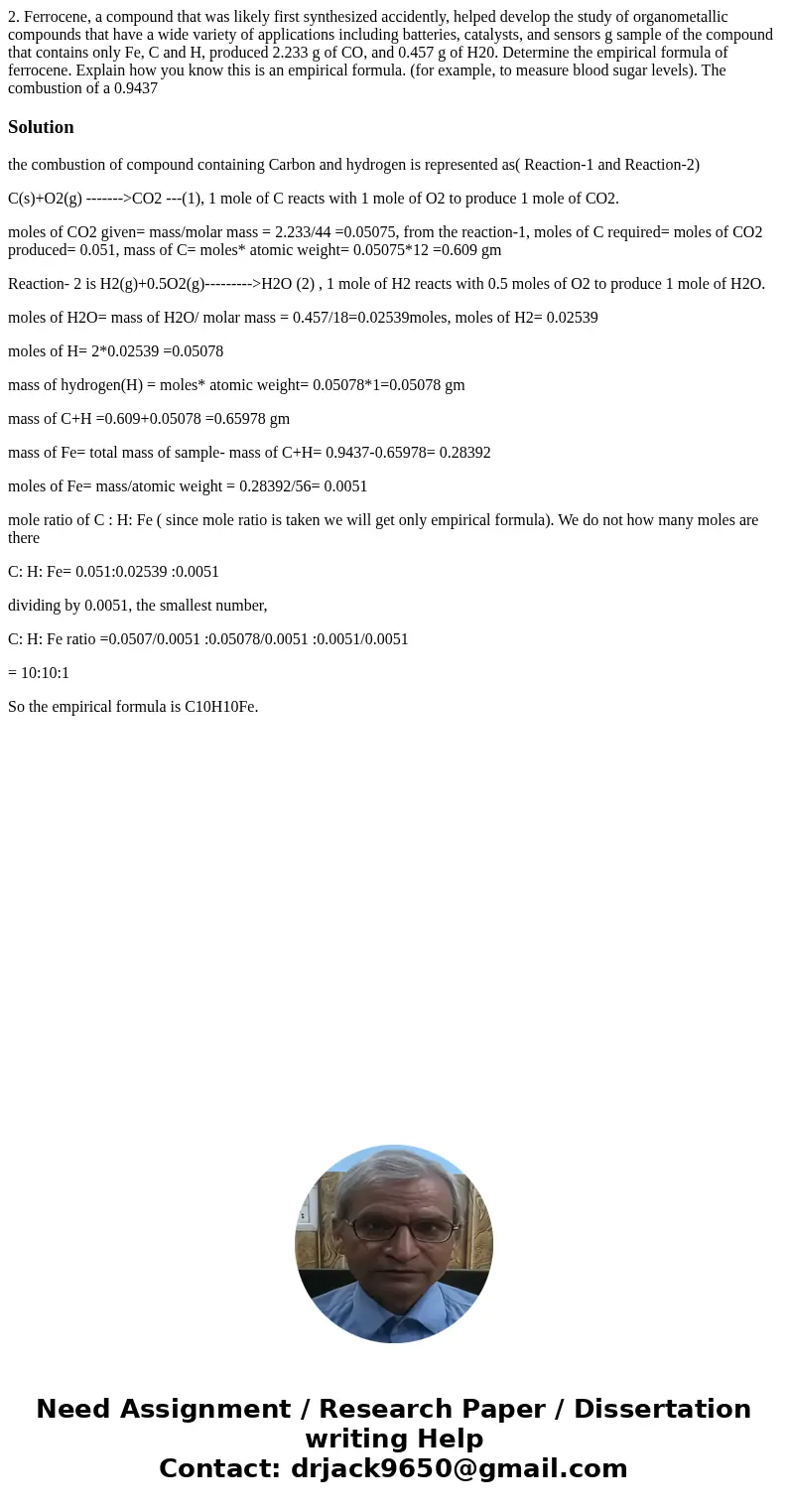2 Ferrocene a compound that was likely first synthesized acc
Solution
the combustion of compound containing Carbon and hydrogen is represented as( Reaction-1 and Reaction-2)
C(s)+O2(g) ------->CO2 ---(1), 1 mole of C reacts with 1 mole of O2 to produce 1 mole of CO2.
moles of CO2 given= mass/molar mass = 2.233/44 =0.05075, from the reaction-1, moles of C required= moles of CO2 produced= 0.051, mass of C= moles* atomic weight= 0.05075*12 =0.609 gm
Reaction- 2 is H2(g)+0.5O2(g)--------->H2O (2) , 1 mole of H2 reacts with 0.5 moles of O2 to produce 1 mole of H2O.
moles of H2O= mass of H2O/ molar mass = 0.457/18=0.02539moles, moles of H2= 0.02539
moles of H= 2*0.02539 =0.05078
mass of hydrogen(H) = moles* atomic weight= 0.05078*1=0.05078 gm
mass of C+H =0.609+0.05078 =0.65978 gm
mass of Fe= total mass of sample- mass of C+H= 0.9437-0.65978= 0.28392
moles of Fe= mass/atomic weight = 0.28392/56= 0.0051
mole ratio of C : H: Fe ( since mole ratio is taken we will get only empirical formula). We do not how many moles are there
C: H: Fe= 0.051:0.02539 :0.0051
dividing by 0.0051, the smallest number,
C: H: Fe ratio =0.0507/0.0051 :0.05078/0.0051 :0.0051/0.0051
= 10:10:1
So the empirical formula is C10H10Fe.

 Homework Sourse
Homework Sourse